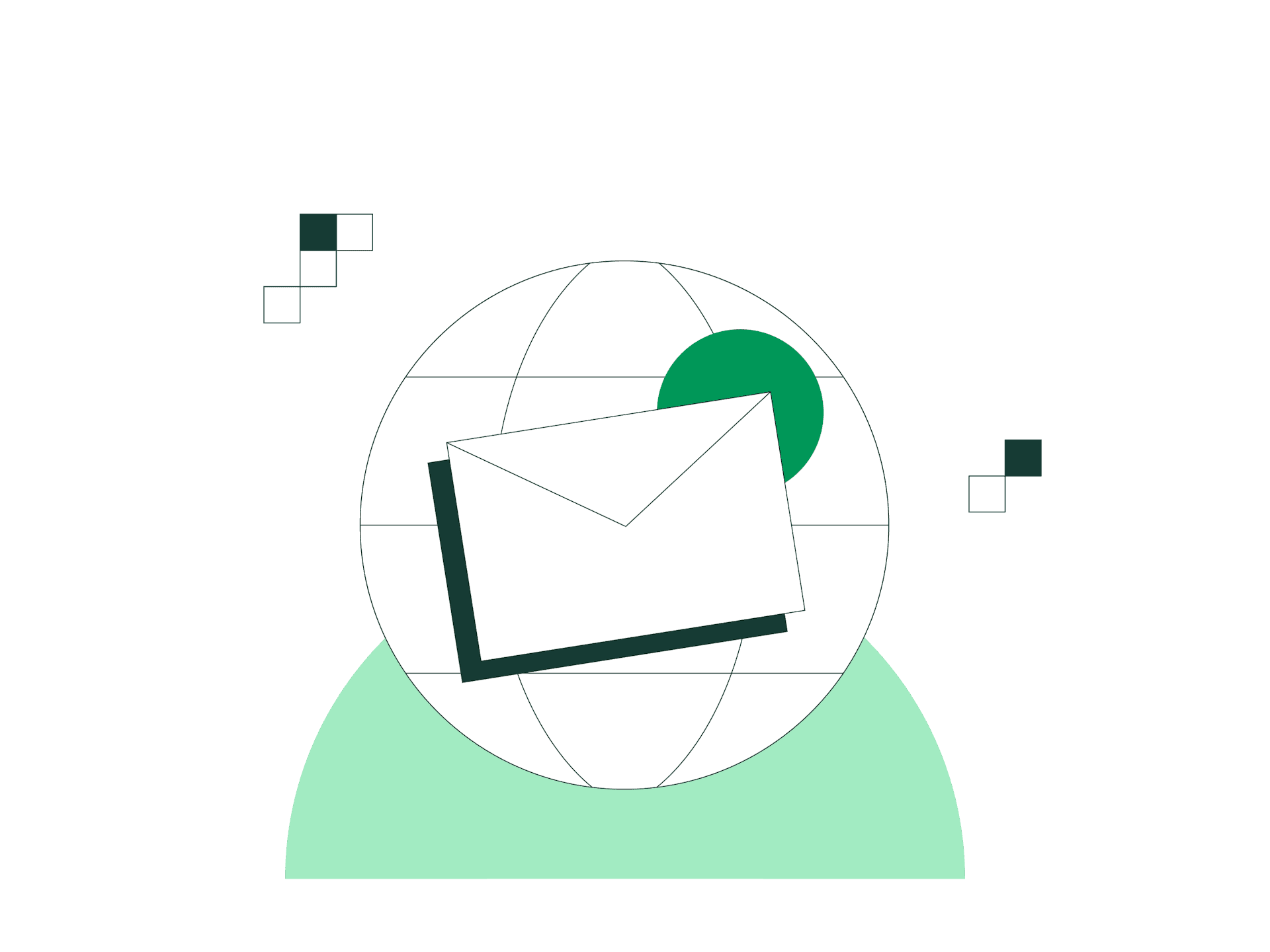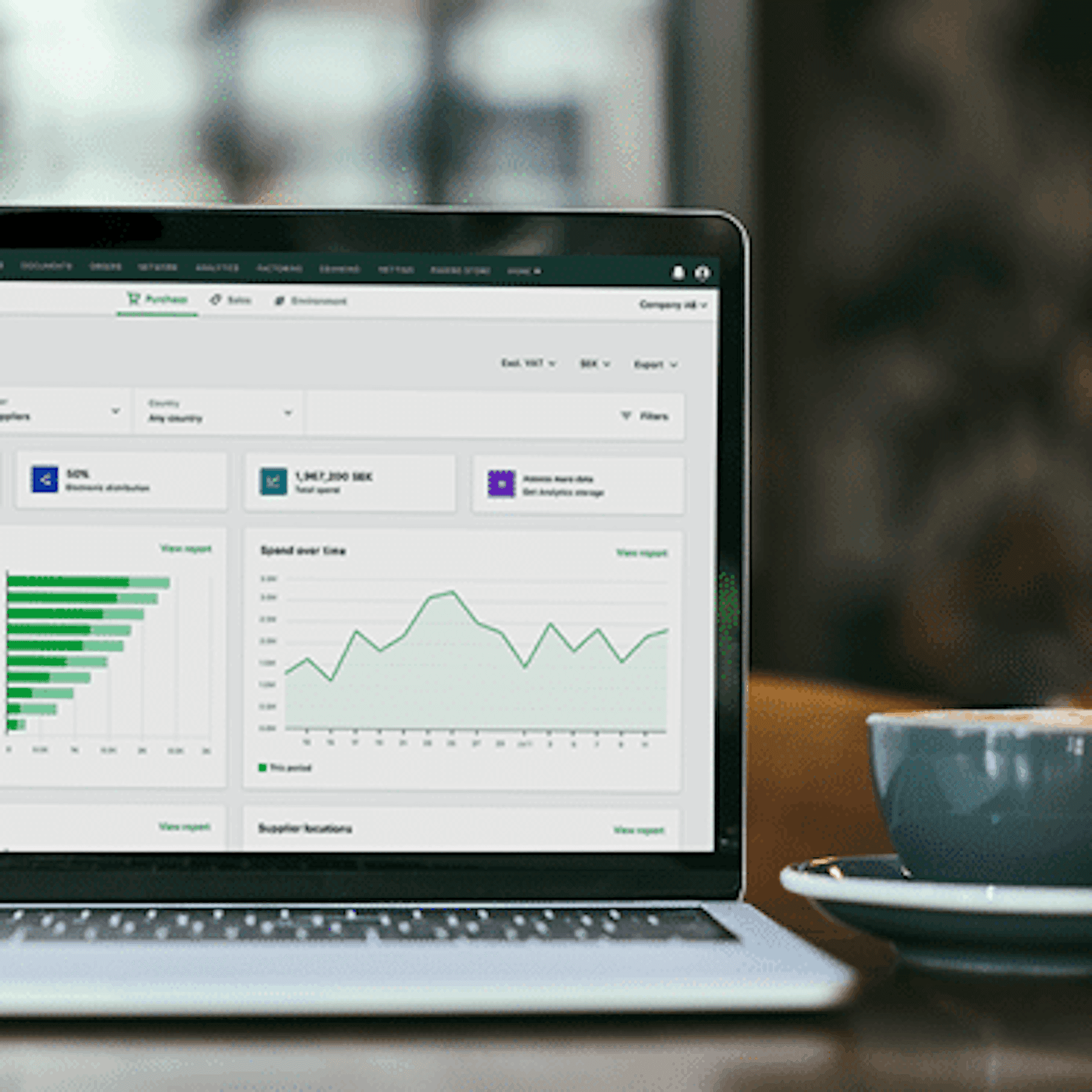The “electronic invoice” or “e-invoice” is not necessarily a new concept, but there is still some confusion surrounding what exactly falls into this definition. Here we answer some questions regarding the term and look at the benefits of genuine e-invoicing compared to other commonly used invoice types.
What is an e-invoice?
An electronic invoice (e-invoice) is an invoice that is issued, transmitted, received, processed and stored electronically using specific document formats. E-invoices are digital throughout the entire document life cycle, from issuance to archiving.
E-invoicing solutions can help replace manual tasks with automated business rules and actions to increase efficiency, minimise error handling, and help businesses comply with e-invoicing legislation.
What is not considered an e-invoice?
While there are many accepted e-invoice formats, not all digital invoices are e-invoices. Here are two types of invoices that do not make the cut:
PDF invoices, typically sent by email, are not e-invoices. PDF invoices cannot be processed automatically because they are not sent in a structured format.
Paper invoices, even if they are converted to digital format, are not e-invoices because they were not issued electronically.
Comparison of invoice types
Here’s a quick overview of the most common types of invoices and how they compare.
Paper or printed invoice
Paper invoices are most often created digitally then printed and sent by post to the counterpart. It takes time for the invoice to reach the recipient, and there is no traceability of the delivery.
PDF (and other image files) invoice
Invoices exchanged over email as PDF, Word or other image files are a first step away from a paper-based invoice flow. However, these are not e-invoices because data must be manually keyed in or captured using OCR. In addition, emailed invoices are often printed out in paper form for matching and archiving purposes.
E-invoice
An e-invoice is issued, transmitted, received and processed electronically. E-invoicing is an integrated solution that enables a fully automated flow from one company’s ERP system to another.
| Paper invoice | PDF invoice | E-invoice | |
|---|---|---|---|
| No system changes | Yes | Yes | Yes |
| Cost-effective | X | Yes | Yes |
| Increases efficiency | X | X | Yes |
| Secure | X | X | Yes |
| Real-time delivery and processing | X | X | Yes |
| Enables touchless operations | X | X | Yes |
| High data quality | X | X | Yes |
| Track and traceability | X | X | Yes |
| Better cash flow and low DSO | X | X | Yes |
| High ROI | X | X | Yes |
| Environmentally friendly | X | X | Yes |
Table: Comparison of the benefits of different invoice types
Free on-demand e-invoicing webinar
What are the advantages of e-invoicing?
The latest Billentis Report reveals that “Compared to conventional paper invoice processing, the automated e-invoicing will result in cost savings of 60-80% in most cases,” (Bruno Koch, “The E-invoicing Journey 2019-2025,” 4.1.5).
Where does all that savings come from? When done right, e-invoicing gives you overview and insight for cutting costs and increasing profit margins that aren’t possible with PDF and paper-heavy invoicing. Here are some of the advantages of e-invoicing that add up to high ROI, long-term savings and better business in general:
- Touchless operations:
E-invoicing enables the automation of time-consuming and error-prone tasks like data entry, matching and approvals so you can reallocate staff to higher-value initiatives.
Better cash flow and lower DSO: Removing paper work and manual tasks can reduce your days sales outstanding by several days in most cases.
- Secure document and data exchange:
Encrypted file transfer, digital signatures and secure networks all make e-invoicing the safest way to send and receive invoices. There’s also no risk of invoices being lost in the mail or sent to junk email.
- Real-time delivery and processing:
View live delivery and processing status of documents on cloud-based platforms or directly from your ERP.
- High quality data:
E-invoicing lets you access and analyse line-level data that drives business growth through better financial and procurement decisions.
- Accurate invoices:
Automated invoice validation and enrichment help ensure only correct transactional data enters your ERP system. Fewer discrepancies mean shorter cycle times and better business relations.
- Track and traceability:
E-invoicing automatically tracks transaction history and entire document journey and so you don’t have to spend time doing it manually.
- Environmentally friendly:
E-invoicing not only helps you lower paper use and CO2 emissions; this sustainable effort also lowers operations costs, leads to higher profitability, and creates a transparent, trustworthy brand reputation.
- Fulfil legal requirements:
E-invoicing with the right service provider ensures you are always up to date and compliant with B2B and B2G tax and archiving legislation.
- Remote work-ready:
E-invoicing tasks can be completed from anywhere without the need for extra resources like printers, scanners or the postal service.
Is now the right time to start e-invoicing?
Yes! There are several reasons to include an e-invoicing strategy in your digital transformation plan as soon as possible:
- Legal and market demands:
Now that many governments have already implemented mandatory e-invoicing laws, others are following suit. Your country could be next, so it doesn’t hurt to start preparing now.
- Competitive edge:
Private companies are also quickly catching on to the advantages of e-invoicing. Being able to send and receive electronic documents shows your business is forward-thinking and ready to work with all digital capabilities.
- Job creation and agility:
Automation opens more opportunities for staff than it takes away. It allows companies to create skills-based roles, evolve existing ones, and maintain in-house operations rather than using third-party resources. It’s also increasingly important to create agile, innovative roles that are not hindered by remote work conditions.
Considerations for your e-invoicing strategy
Before you commit to an e-invoicing strategy, there are certain considerations to keep in mind. Do you want to find out:
- how to get your company to commit to the transformation?
- ways to get your business partners on board your e-invoicing project?
- how to find out which e-invoice formats and standards are most compatible with your business?
Another important consideration is to define the scope of your project – do you want to digitalize your supplier invoice flow (AP Automation) or your customer invoice flow (AR Automation), or both?
Download our e-invoicing e-book below for tips and detailed advice from experts on how to execute a successful e-invoicing project!
This text was originally published 18 February 2021 and last updated 19 January 2022.
Download free e-invoicing e-book
Argomenti:

Rimani aggiornato con la nostra newsletter
Esplora altre risorse

Entrate in contatto con noi
Siete interessati a iniziare o a saperne di più? Lascia qui i tuoi dati di contatto e ti contatteremo!
